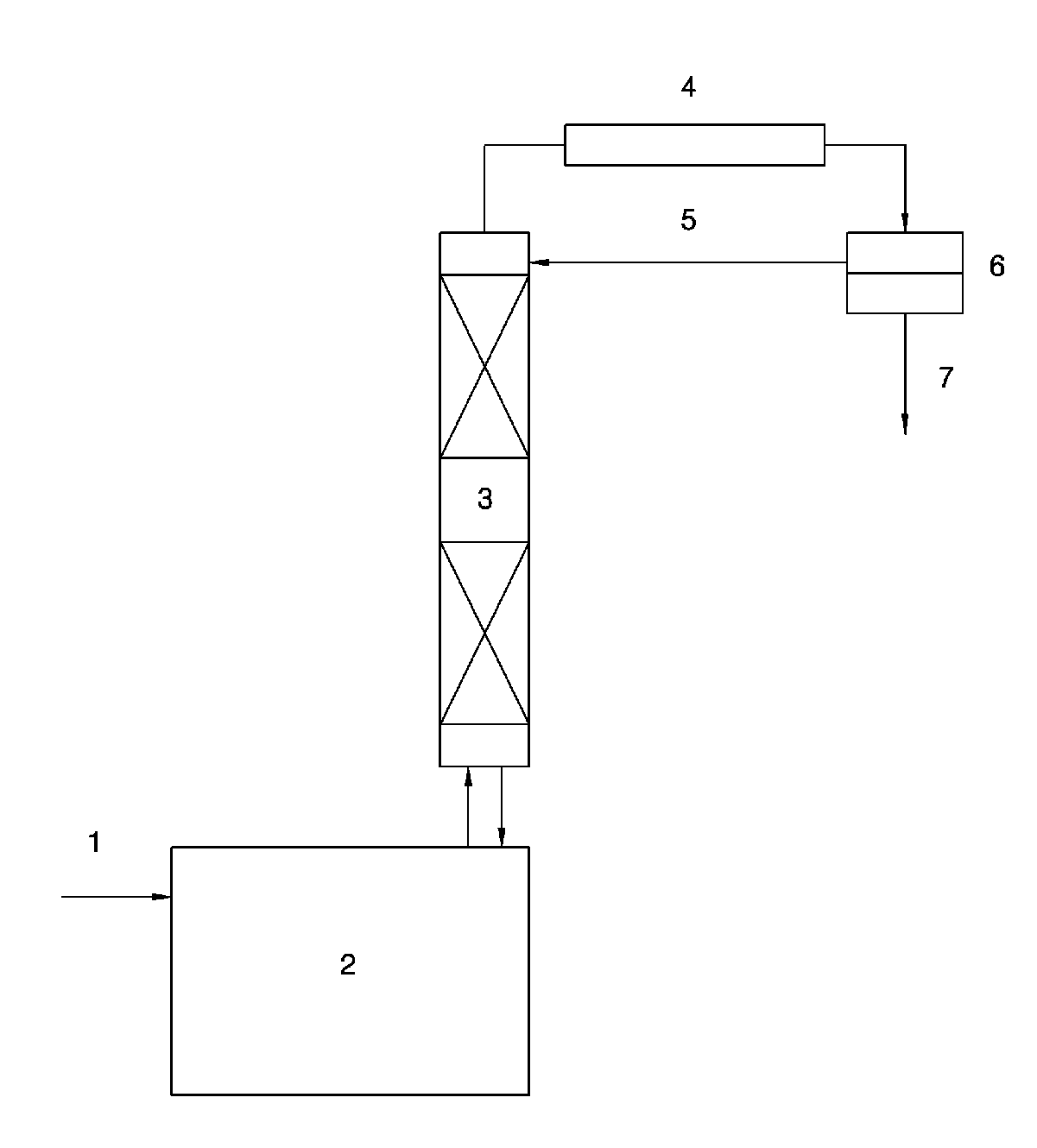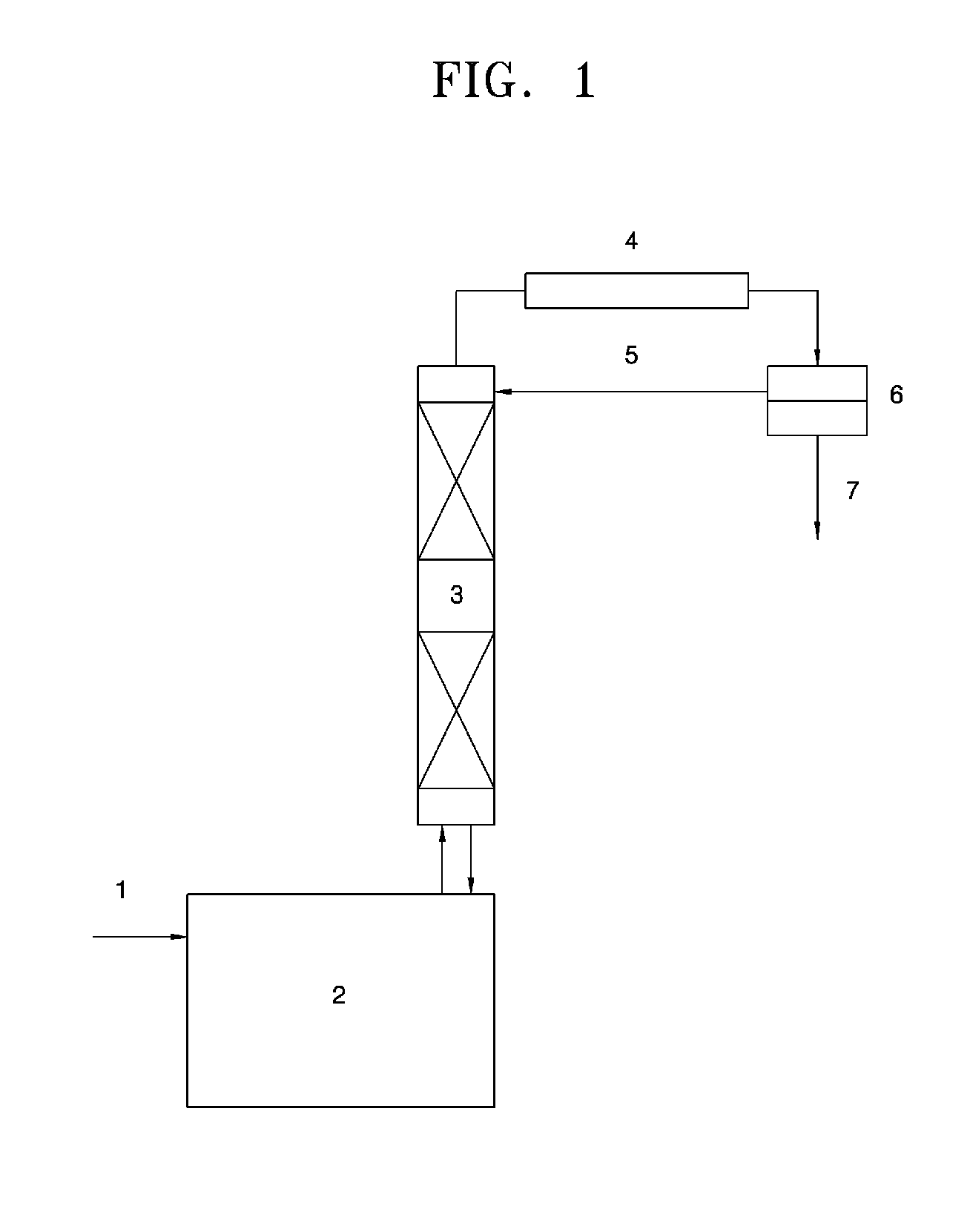Synthetic method of glycol diesters from reaction of glycol monoesters and linear aliphatic carboxylic acids
a glycol diester and linear aliphatic technology, applied in the direction of climate sustainability, chemistry apparatus and processes, organic chemistry, etc., can solve the problems of low selectivity to glycol diester and yield thereof, inability to achieve significant reduction in reaction time, and low yield of final product, so as to reduce the reaction time of glycol diester and effectively separate reactants and water
- Summary
- Abstract
- Description
- Claims
- Application Information
AI Technical Summary
Benefits of technology
Problems solved by technology
Method used
Image
Examples
example 1
[0042]In the present Example, a 1 L glass reactor on which a distillation column filled with a packing material was mounted and to which a temperature controlling system was connected was used. 324.4 g of 2,2,4-trimethyl-1,3-pentanediol monoisobutyrate, 171.3 g of butyric acid and 3.25 g of tetraisopropyl titanate were charged into the reactor. The reactor was heated to 230° C. to perform the reaction. Water produced during the reaction formed an azeotrope with the butyric acid and was continuously removed through the distillation column on the reactor. The butyric acid separated from water was returned to the distillation column to be used in the reaction. As a result, the conversion rate of 2,2,4-trimethyl-1,3-pentanediol monoisobutyrate was 99.6% after 5 hours and the selectivity to 2,2,4-trimethyl-1,3-pentanediol monobutyrate monoisobutyrate was 95.4%.
example 2
[0043]The same experimental procedure as in Example 1 was performed, except that 1.47 g of tetraisopropyl titanate was used. As a result, the conversion rate of 2,2,4-trimethyl-1,3-pentanediol monoisobutyrate was 99.3% after 5 hours and the selectivity to 2,2,4-trimethyl-1,3-pentanediol monobutyrate monoisobutyrate was 95.2%.
example 3
[0044]In the present Example, a 3 L glass reactor on which a 15-step tray column with a diameter of 50 mm was mounted and to which a temperature controlling system was connected was used. 1373.5 g of 2,2,4-trimethyl-1,3-pentanediol monoisobutyrate, 728.5 g of butyric acid and 13.7 g of tetraisopropyl titanate were charged into the reactor. The reactor was heated to 230° C. to perform the reaction. Water produced during the reaction formed an azeotrope with the butyric acid and was included in an aqueous layer to be continuously removed through an oil water separator on the reactor. An organic layer separated from the aqueous layer was returned to the tray column (first step). As a result, the conversion rate of 2,2,4-trimethyl-1,3-pentanediol monoisobutyrate was 99.5% after 5 hours and the selectivity to 2,2,4-trimethyl-1,3-pentanediol monobutyrate monoisobutyrate was 95.3%.
PUM
| Property | Measurement | Unit |
|---|---|---|
| yield | aaaaa | aaaaa |
| process yield | aaaaa | aaaaa |
| reaction temperature | aaaaa | aaaaa |
Abstract
Description
Claims
Application Information
 Login to View More
Login to View More - R&D
- Intellectual Property
- Life Sciences
- Materials
- Tech Scout
- Unparalleled Data Quality
- Higher Quality Content
- 60% Fewer Hallucinations
Browse by: Latest US Patents, China's latest patents, Technical Efficacy Thesaurus, Application Domain, Technology Topic, Popular Technical Reports.
© 2025 PatSnap. All rights reserved.Legal|Privacy policy|Modern Slavery Act Transparency Statement|Sitemap|About US| Contact US: help@patsnap.com


